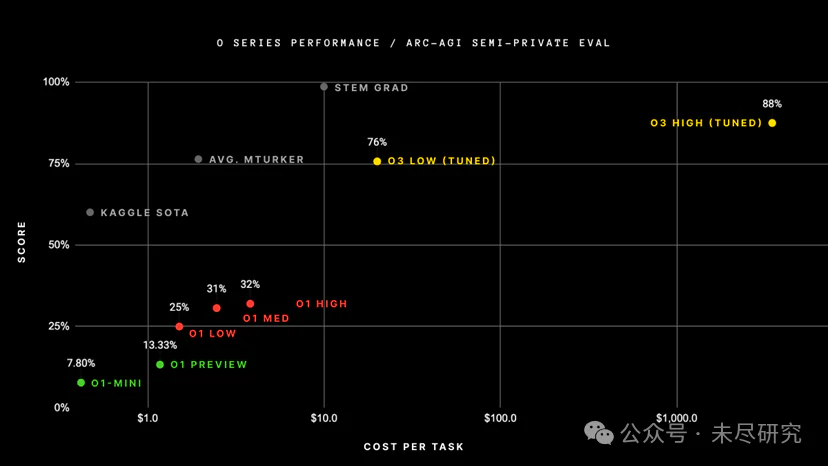As the cloud computing industry continues to evolve, layoffs have become a common practice. However, to drive efficiency and ensure continued growth, cloud service providers need to introduce new specialized roles to address management challenges and improve collaboration across departments. This article explores strategies for optimizing management and enhancing operational efficiency through the addition of key positions in cloud companies.
Seeing that Musk is about to establish the D.O.G.E department, it feels very on-topic, and I couldn’t resist jumping on the hot trend.
Look, even Musk is looking to cut costs and improve efficiency by adding new departments...

1. Increasing Staff to Solve Management and Planning Issues
Public cloud providers are expected to announce turning a profit by 2025, but the current profits are just short-term gains brought about by course corrections. The "price increase and overselling" profit model in the cloud industry is not sustainable.
Cloud vendors who have turned a profit through layoffs can continue cutting labor costs, but to keep laying off employees, they need to precisely identify the capabilities of their staff. Cloud providers can also streamline many "self-promotion + absolution + annoyance" standards and processes, which can activate a large amount of resources and improve production efficiency.
One obvious problem with cloud vendors' current management is that, whether in sales or product lines, managers only focus on financial numbers (revenue and profit) and do not evaluate professional business indicators in public cloud services. The new positions suggested in this article are mostly designed to break free from this primitive approach.
Cloud vendors have sister business lines within the same group. In those business lines, managers not only pay attention to revenue but also focus on the business metrics of the respective industry. However, cloud vendors are often unsure about which business indicators to focus on and frequently encounter fake data, so they end up focusing only on financial numbers.
When cloud vendors lack professional indicators and metrics and are forced to rely on financial numbers to manage the company, it becomes a rigid, inefficient, and inaccurate management method. The decentralization phase often turns into a gamble based on boldness, while verifying financial numbers can take months or even years, and whether products are sold and profitable is a chaotic problem with multiple causes.
An unrelated but instructive example is that a certain high-ranking leader in charge of the economy focuses on indicators such as industrial electricity consumption and logistics freight volume, which are difficult to falsify and have far-reaching impacts. Public cloud also needs to find business indicators that are relevant to their industry.
Cloud vendors need to not only improve the capabilities and efficiency of front-line employees through layoffs but also add several "never-before-seen" specialized positions. These positions are not new redundant staff but are meant to gradually give cloud vendors' management planning clear objectives and ensure key execution.
The positions introduced in this article are newly created roles. While you may have seen similar or even identical roles before, these tasks have never been completed in the past.
2. Creating a "Leadership Dashboard"
Cloud vendors should provide data visualization platforms for executives so that they can see important business metric data.
There are many data visualization platforms in companies, and those intended for executives are called "Leadership Dashboards." Setting up data visualization platforms and connecting data is relatively simple, but because cloud vendors often do not understand which business metrics are critical, they lack a usable "Leadership Dashboard."
Cloud vendors need to add senior advisor roles for the "Leadership Dashboard." These individuals must have a deep understanding of cloud products or cloud sales. They not only filter key performance indicators for executives but also interpret each performance indicator and provide handling plans for abnormal metrics.
Every company has some information systems accessible to all employees, but the working logic of the "Leadership Dashboard" is completely different from these systems. Don’t confuse the two.
This is a niche role that is very dependent on the leader’s personal habits and is difficult to standardize. After completing data definitions and integration, the work does not officially end; advisors must frequently verify and confirm abnormal data.
When the product line provides incorrect data to monitoring and billing departments, it's considered a mistake, not a fault. The error-prone team will "acknowledge the mistake, fix it, make the mistake again, and fix it again."
3. Giving Sales a CRM "Cage"
The biggest management loophole for cloud vendors is the sales system's "wait until the end of the year to check the numbers." This approach is not goal-oriented and is essentially neglectful management. Cloud vendors need to put a "cage" around their sales teams and bring the sales process under management.
Sales success is half about personal effort and half about external luck. A management approach that only looks at the numbers and ignores the process will not identify excellent salespeople. As industry competition intensifies, each cloud vendor must identify and retain top sales talent.
Sales is an upstream department for all other departments. When executives only focus on the numbers and ignore the process, it allows sales to waste internal resources freely. This is one of the main reasons cloud vendors have excess staff. To continue cutting costs and increasing efficiency, cloud vendors must allocate resources only to meet the clear demands of top-performing salespeople.
The waiting time for closing sales deals is too long. If cloud vendors only look at numbers and not the process, they will have to wait months or even years before making management decisions, leading to inefficiency and stagnation in decision-making.
Sales teams’ erroneous feedback can greatly mislead cloud vendors' management decisions. Having sales input the entire sales process into the system can reduce omissions and fabrications.
To manage sales, CRM is a good tool, but at present, CRM is not yet a qualified "cage." Cloud vendors need to hire CRM implementation consultants who understand sales, clients, and products, simplifying CRM content but making its format more rigorous, easy to quantify, and connected to backend support.
By using a rigorous format, sales work becomes easier to quantify. All interactions between sales and clients, including but not limited to presentations, testing, deal closures, complaints, and churn, can be made into "drop-down menus and checkboxes" in the CRM system. This not only reduces the difficulty of filling out forms but also makes CRM data structured, logical, and easy to track for follow-up actions.
This will connect sales needs with backend support. Sales often need to coordinate with backend colleagues to fulfill client requests, such as implementing routine tests or negotiating price reductions. The details of where the request originates, its specifics, the salesperson’s judgment, and what colleagues need to do can also be summarized into "drop-down menus and checkboxes." This way, cloud vendors can track how much support resources are spent on sales and monitor whether the support departments are fulfilling their responsibilities.
4. Genuine Product Management
Salespeople and product managers are both demand-driving departments. The chaos of sales being disconnected from management, as described in the previous section, can also be replicated in the product manager role. Furthermore, product managers are only responsible for overall sales figures and are often held accountable for "supporting" sales. Managing product managers based on performance is a severe misapplication of logic. Daily cooperation between product and sales teams often breaks down, and when blame is shifted between them, executives can't tell who the real problem is.
Many companies have product management departments or product technical committees with the same name. However, these are only similarly named roles and are unrelated to the real product management work described here. True product management work should involve three key tasks:
The true product managers who need to be managed at the company level will not exceed 20 people. Because the management base is small and there is significant variation between products, product management does not need to rely on IT systems for templates. Managing through meetings and long-term documentation is enough. This work requires just two or three full-time consultants, with some part-time consultants from the product, pre-sales, and post-sales teams.
The first important task of product management is to review the real work achievements of product managers. These achievements include authoritative product descriptions, competitive product analysis, implementation details, and technical service-related documentation. These documents must be simple, understandable, and convincing. If the product management team can't understand these documents during reviews, the product manager’s work is deemed unqualified.
The second important task is to assess the product manager’s real skill level. Cloud products generate a lot of operational data. Organizing the sources and evidence of this data, the trends and correlations, and the methods of data adjustment are key responsibilities for the product manager. Having product managers explain the sources, authenticity, and interrelationships of this data is a way to evaluate their skills.
The third important task is to confirm whether the product’s positioning within the company is appropriate. Product positioning is about determining whether the product is a "primary revenue-generating cloud product," a "technical support cloud product," or an unimportant cloud product. If the product’s positioning is low, the company's requirements for it will be low as well. If the positioning is high, executives must provide more resources and increase attention.
5. Reshuffling Pre-Sales
Many of my readers and real-life friends are solution architects (SAs). In this section, I will reiterate my suggestion to reorganize the pre-sales department. Cloud vendors should revert most SAs back to their original roles as pre-sales staff, which would save labor costs and simplify company management.
Solution architects are still engineers, even if their skills are not top-tier. In the early days, cloud vendors needed SAs to take on the role of "on-site product managers and on-site implementation experts," a role that required managing a team of technical engineers, but with no direct connection to sales—cross-department cooperation.
During rapid expansion, cloud vendors couldn't find enough qualified SA talent and had to hire ordinary pre-sales staff to pose as solution architects. This led to serious management confusion because these two completely different roles were under the same job title. Since official SAs were highly paid, the regular pre-sales staff were also offered high salaries. As pre-sales roles are closely tied to sales, the official SAs were also expected to fall under the sales department, serving as assistants.
Real solution architects don’t play a role in the sales line because they don’t have decision-making authority over product and research decisions. These SAs should be reassigned to product management roles, as they understand technology, customers, and business, making them ideal candidates for product management.
A sales line or primary sales team should retain only two or three real solution architects. However, the role and application of these SAs will be very different from those of regular pre-sales staff.
The real solution architects remaining in the sales team should serve the sales "big boss." Regular sales staff should rely on regular pre-sales for support. For client projects that regular pre-sales can’t support, they shouldn’t waste company resources.
The real solution architects in the sales team should mainly focus on writing documents and conducting training to replicate their abilities. They should use authoritative materials provided by product managers to create templates for client visits and product introduction documents. After training, they can conduct exams to help the company identify smart and diligent salespeople.
The real solution architects in the sales team can follow the guidance of the sales big boss to track the most important customer projects. Customers like to work with technical experts who have direct access to cloud executives. Sales can no longer monopolize key client relationships. If a salesperson switches to a new company and takes a client with them, it’s fine for the new company to send a technical expert to assist in client relations.
The real solution architects in the sales team can also represent the entire sales department to propose product improvements. If the product manager fails to seriously address these requests, it will lead to complaints from executives or a refusal to sell the product.
6. Reaffirming Technical Service Work
Many of my friends don’t understand why I emphasize "after-sales customer service work" so much. But this is not just customer service, and I didn’t invent this new role. My call for this position is because cloud vendors lack a proper understanding of how to serve their clients well.
From a company management perspective, when cloud vendors face large clients, the relationship between the client's technical team and the product’s R&D department is often out of control.
Cloud vendors establish a one-line relationship with clients through sales, and sales often intercept all client information, completely isolating the company from the client. This isolation leads to many problems. For instance, when clients want to negotiate prices, is it really that they only care about the price, or is it because sales are the only ones who can understand prices?
Cloud vendors only maintain relationships with client procurement departments, not with the client's technical team. Cloud sales are not friends with client technical teams; when cloud sales interact with clients’ tech teams, it is often to extract information. Similarly, when client tech teams interact with cloud sales, it's either a complaint or a claim, and pre-sales and post-sales must cooperate with the sales communication rhythm.
As the public cloud enters a stage of competition over existing customers, cloud vendors must work hard to prevent customer churn. However, customer churn due to poor product quality or failures remains out of control within cloud vendors. Cloud vendors need to add a technical service role that takes on the responsibility for customer churn.
The loss of large customers can be attributed to three causes: 1) business issues, 2) client business decline (sales’ responsibility), and 3) product failures leading to customer churn (which is currently blamed on sales, but can sales drive improvements?). When platform failures or poor technical quality are the reason, this is a research and development issue, but product managers can’t always pinpoint which developer’s capabilities are lacking. Forcing sales to bear the responsibility for customer loss is a mismanagement issue.
Cloud vendors need to learn from traditional IT companies (excluding SaaS providers) by adding a technical service expert who can build relationships with the client’s technical department. This person should understand technology, be able to drive product quality improvements, and hold the R&D team accountable for product issues that lead to customer churn.
Besides reducing customer churn, technical service experts can do much more. For example, when clients use multiple clouds, they can direct valuable workloads to their cloud and leave poor workloads to competitors. They can also provide product managers with detailed requirements and environmental information to help improve the product.
Conclusion: A New Starting Point for Human Effort
I've written many articles calling for the reduction of excess staff and improving cost efficiency, but this article calls for the addition of staff to improve efficiency. These two objectives are not in conflict.
For the cloud industry to become more efficient and standardized, it needs not only to reduce redundant staff but also to introduce fresh talent at both the grassroots level and in senior management. Increasing staff at the execution level should be based on "recruiting talent from the client side," and management innovation must come after prolonged confusion, followed by a moment of clarity—then we can look at this article.
If the recruitment advocated in this article is mishandled, it could indeed create new redundancies, and this type of redundancy will harm the management team and the company more. However, this is an issue of poor execution, not a flaw in the direction suggested by this article. Adults should have the logical judgment ability to process complex information.







